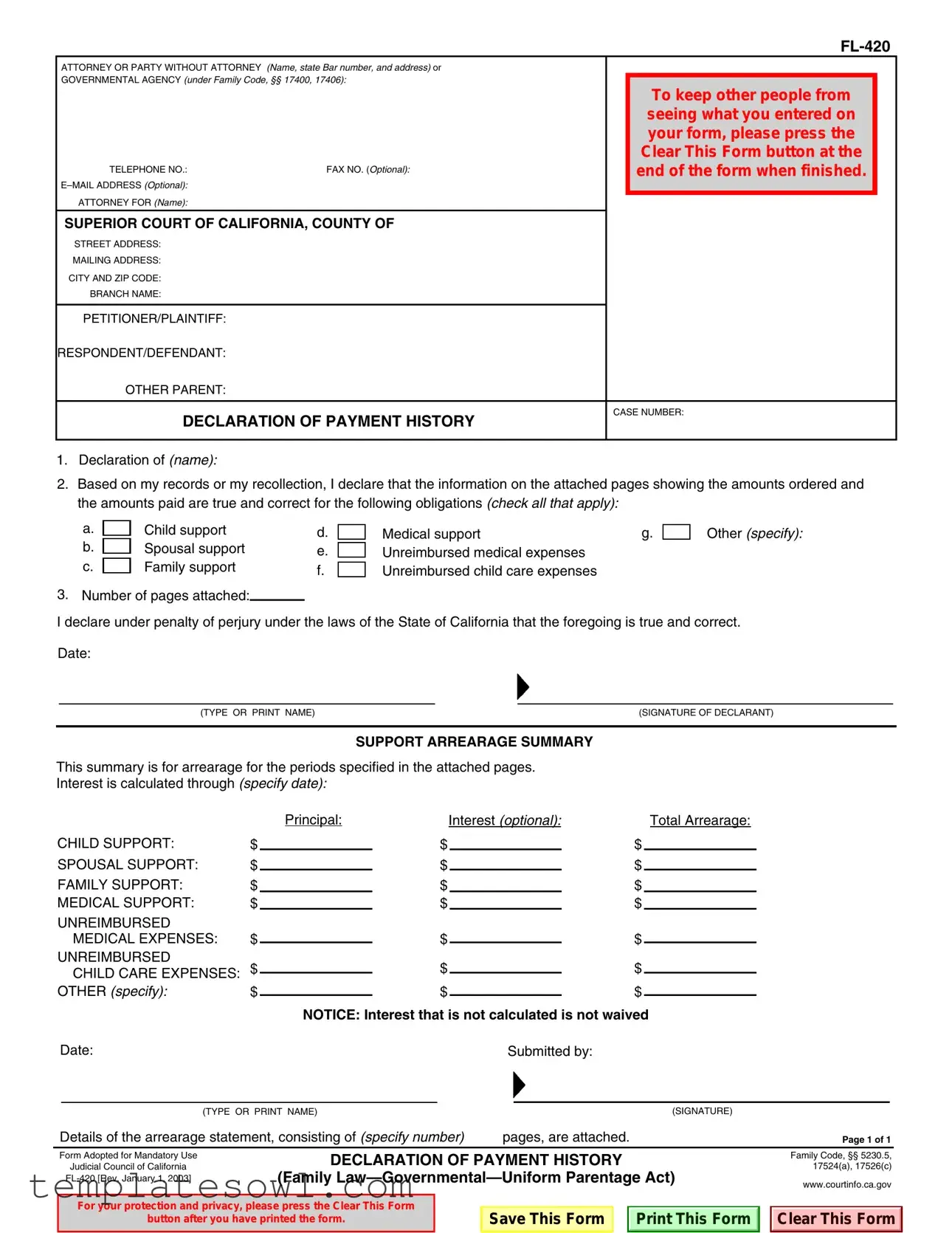When filling out the FL-420 form, one common mistake is not providing complete contact information. This includes the attorney or party's name, state bar number, and full address. Without thorough details, the court may struggle to communicate properly, which could delay your case.
Another mistake is neglecting to clearly indicate the amounts for each category. The form asks for specific amounts for child support, spousal support, and others. If these amounts are left blank or are unclear, it can lead to confusion and further complications in the process.
Many people also forget to attach all necessary pages. The FL-420 form requires an accurate count of the attached documents, and failing to do this can result in the court rejecting your submission. Always double-check that you have all the pages ready to go before handing in your form.
A common oversight is the date. Some individuals write the wrong date or forget to sign the form altogether. The declaration under penalty of perjury must be dated and signed to affirm the truthfulness of the information provided. An unsigned document may be considered invalid.
It’s important to be precise when indicating the purpose of the payments. For example, if you check "Other," be sure to specify what that means. Vague descriptions can lead to misunderstandings about what obligations are being addressed.
People often underestimate the importance of calculating interest. If applicable, always complete the interest section. If you exclude it or calculate it incorrectly, you risk underreporting your arrearages, which can create distrust in your claims.
Some make the mistake of not reviewing the instructions carefully. Each section of the FL-420 form has specific requirements. Skimming through these can lead to overlooking essential details, which can hinder your filing process.
Lastly, many forget to safeguard their information. After filling out the form, it’s crucial to press the “Clear This Form” button to keep your personal information private. This is not just a suggestion, but a necessary step to ensure confidentiality.

